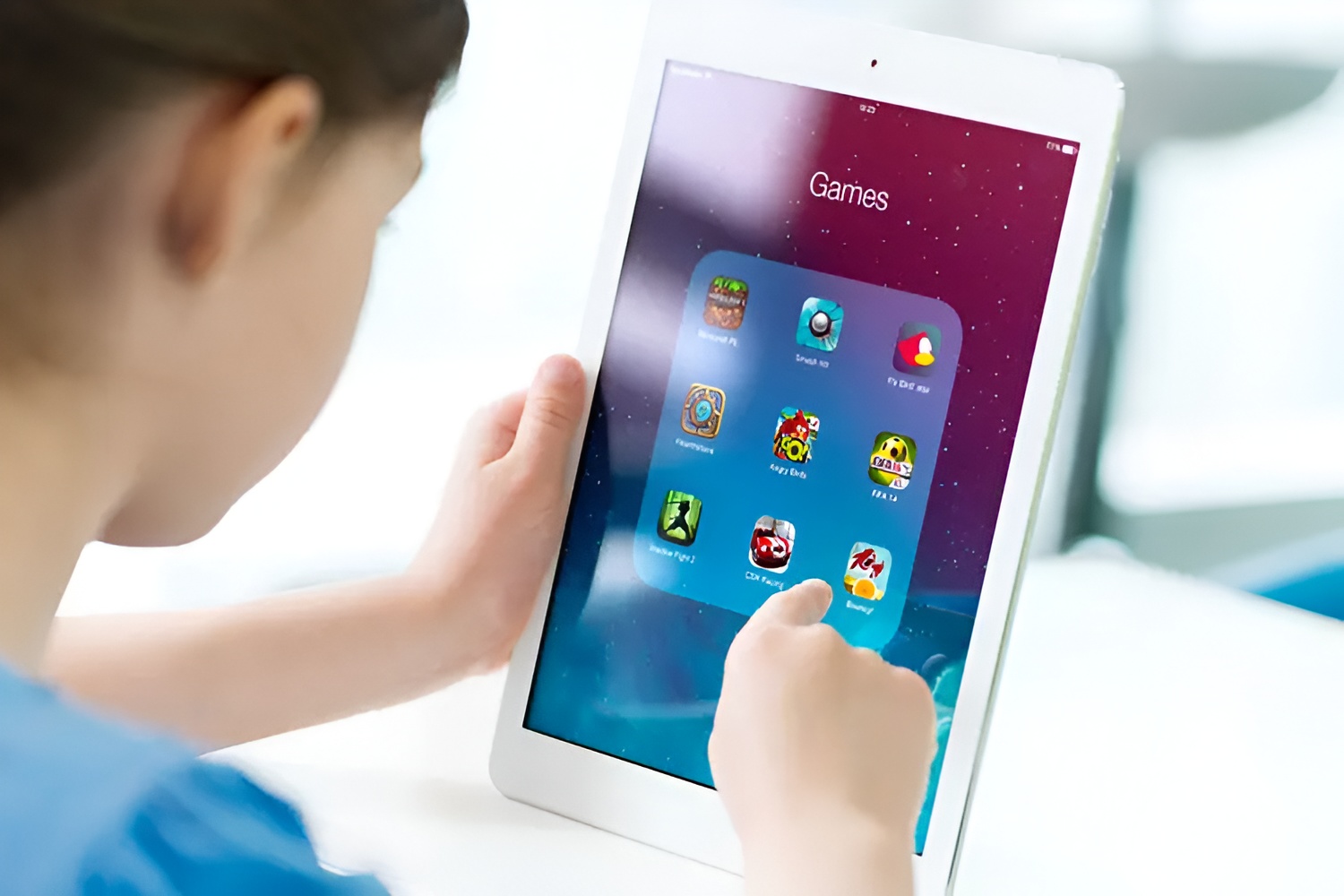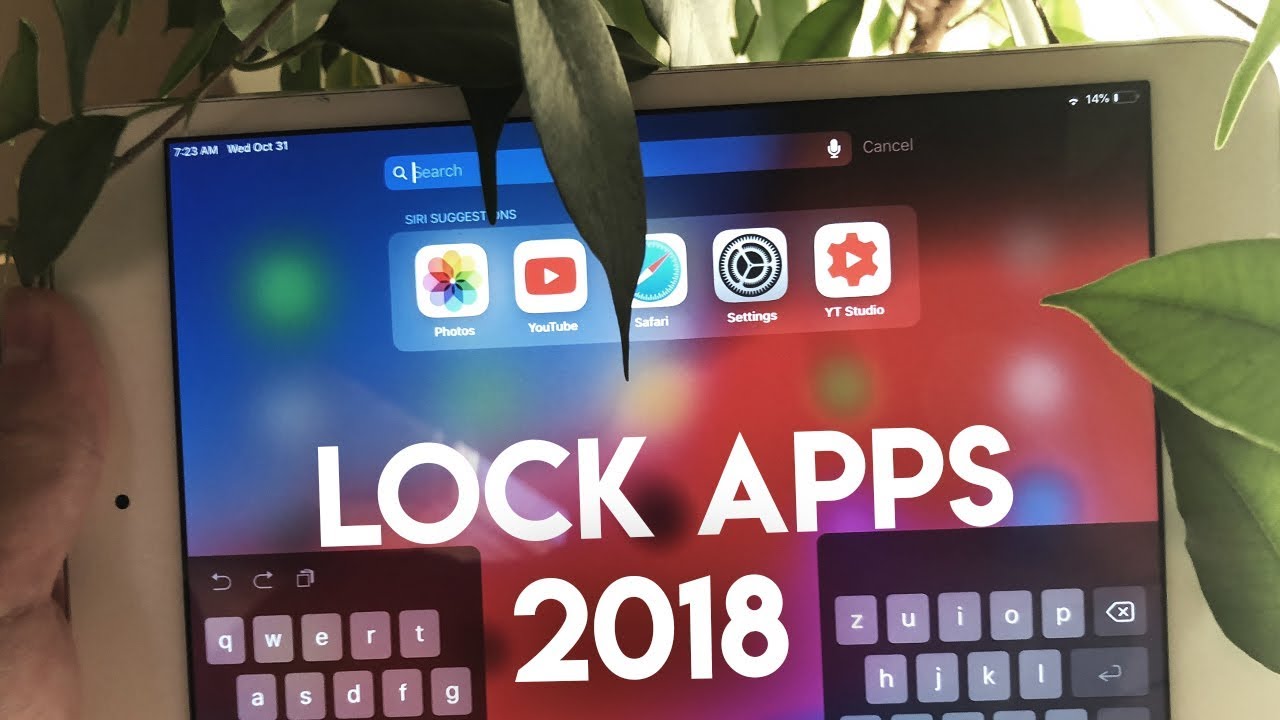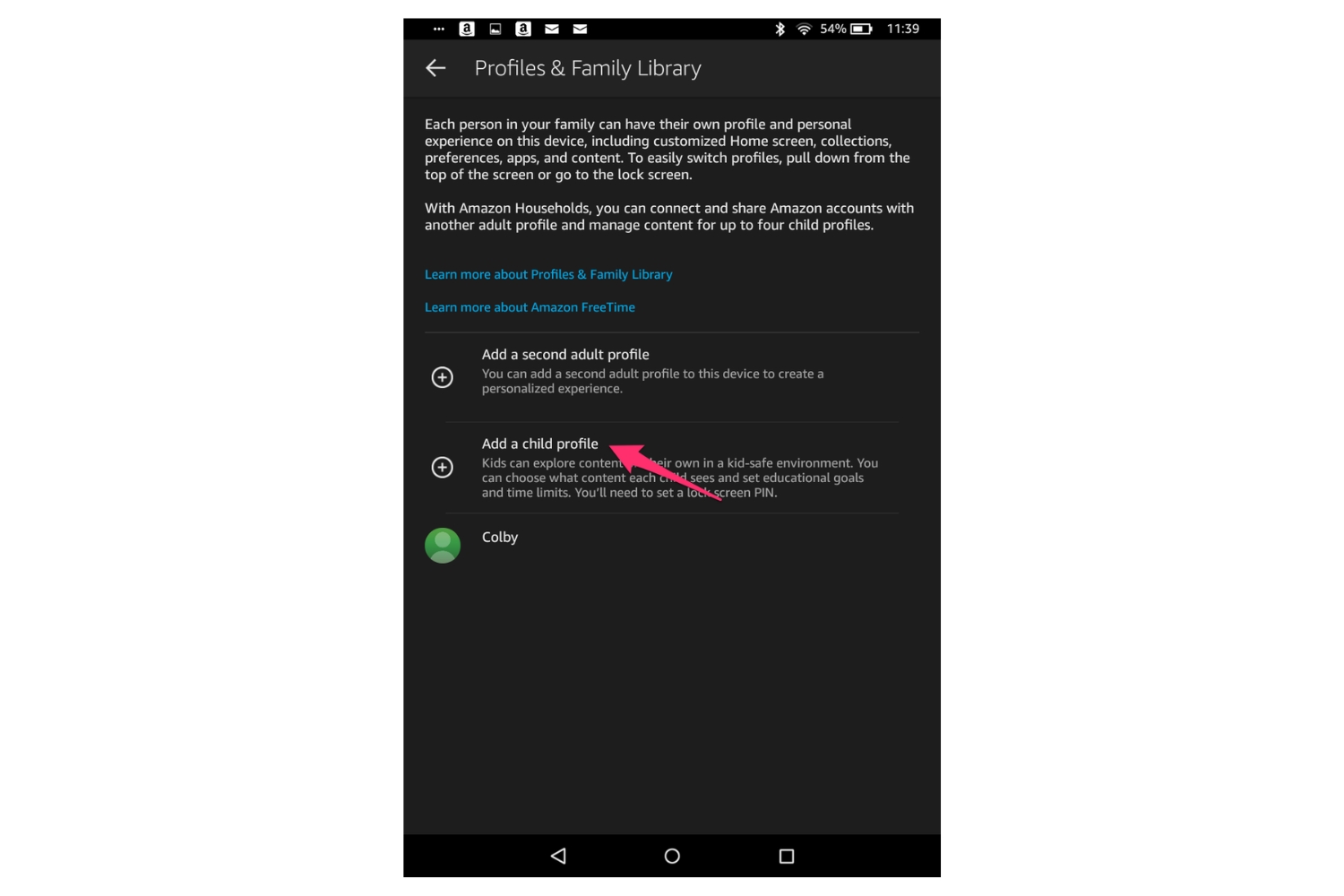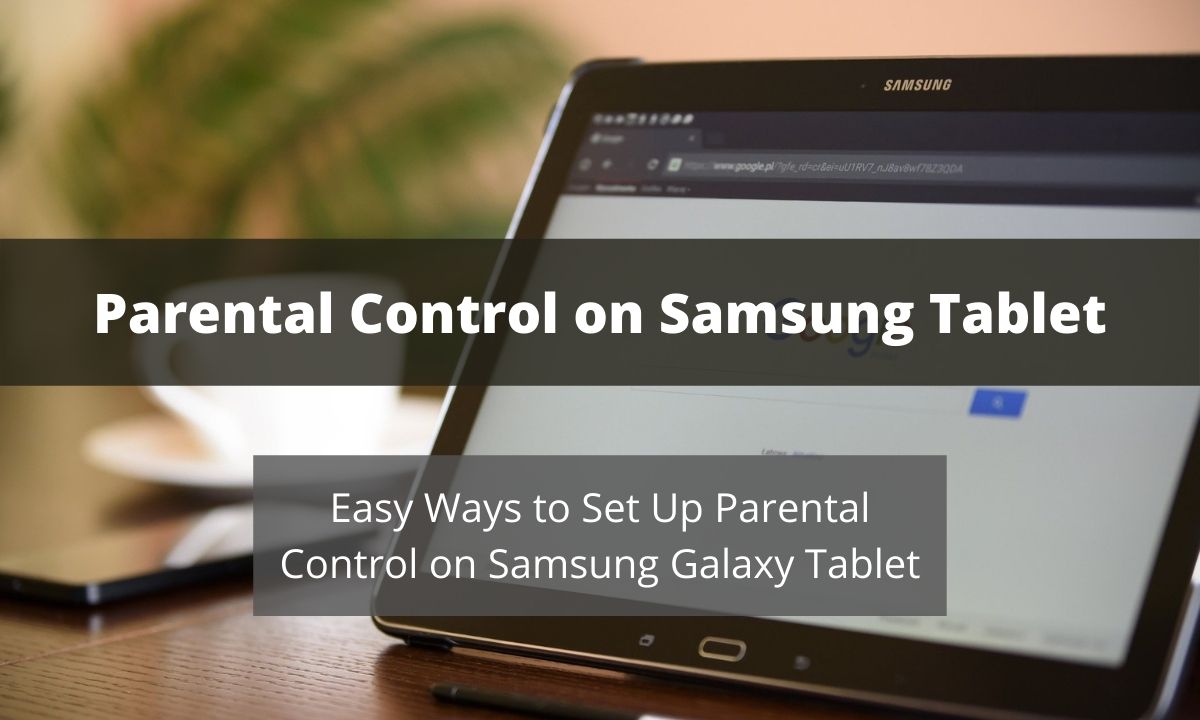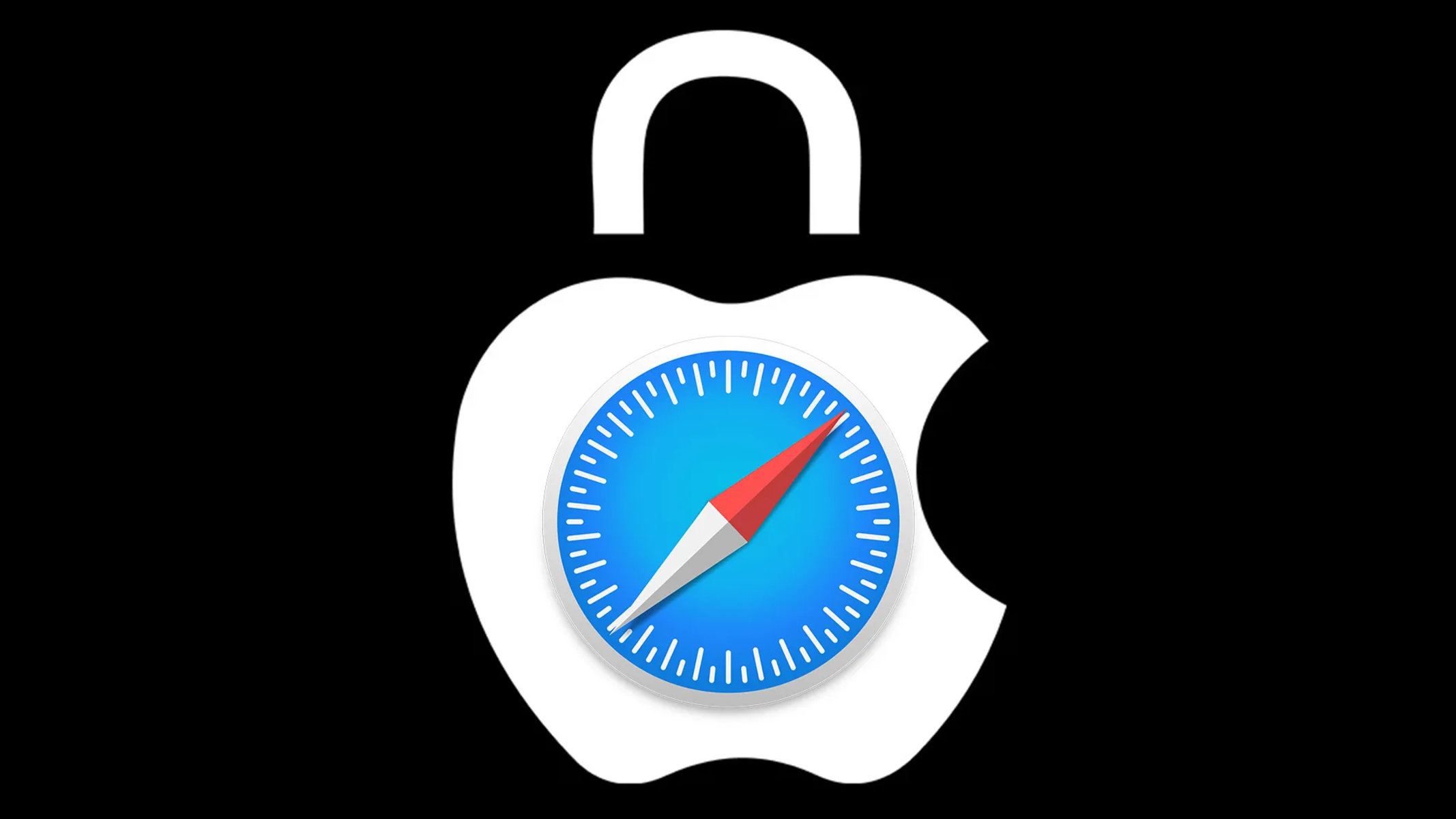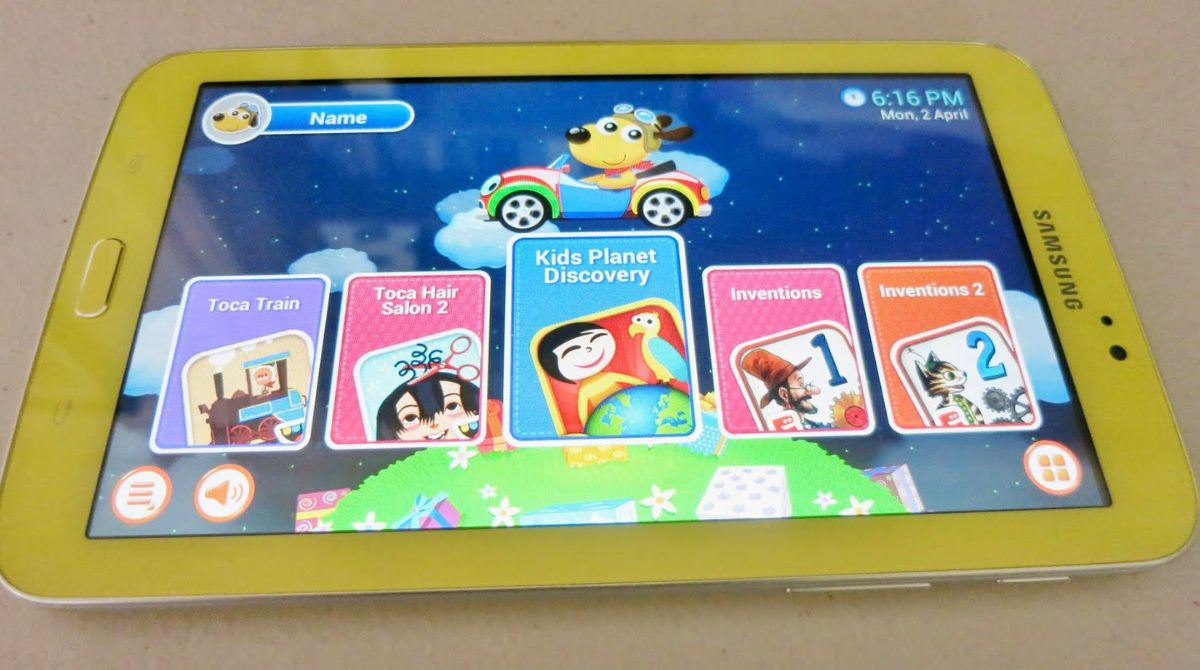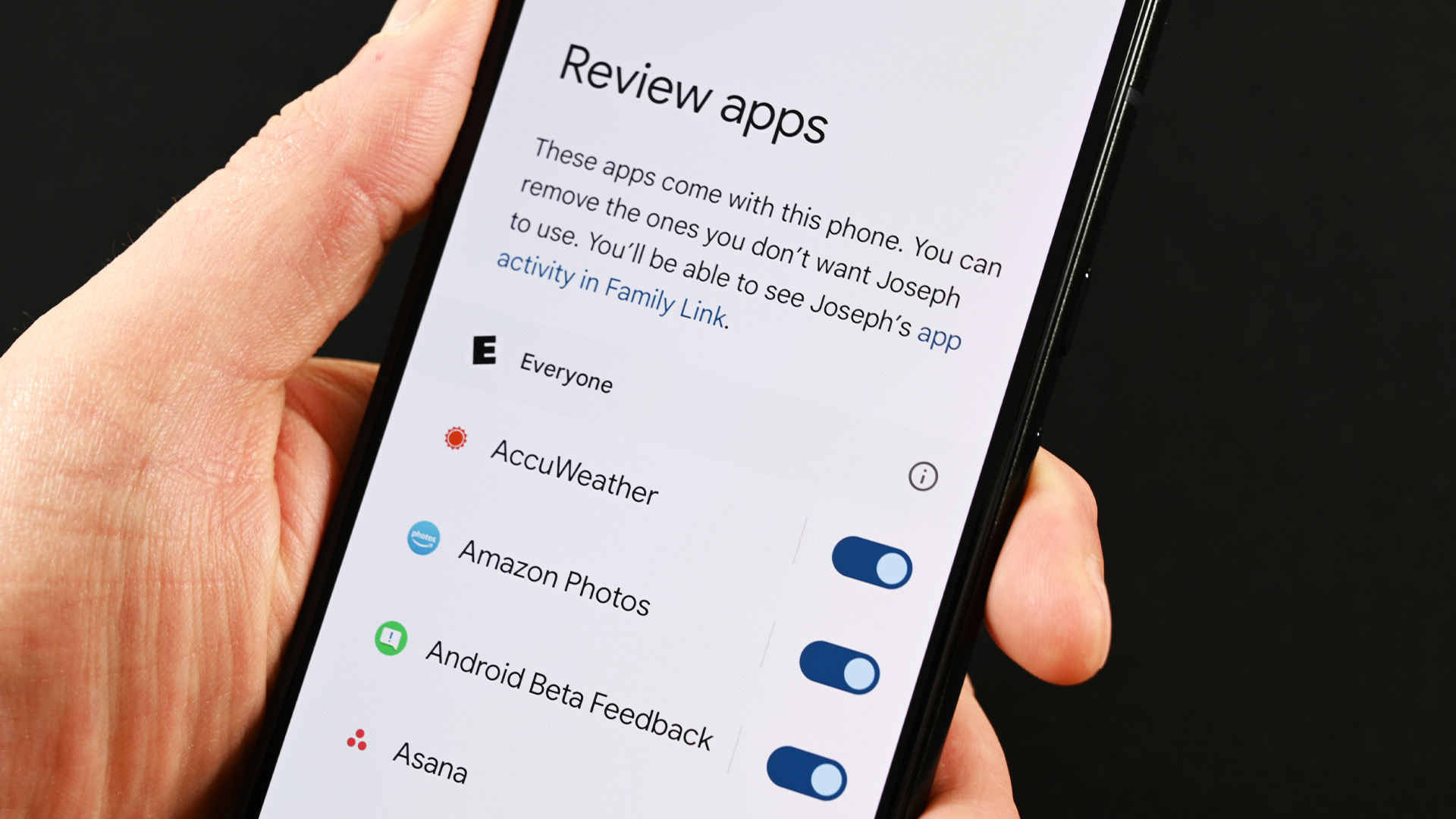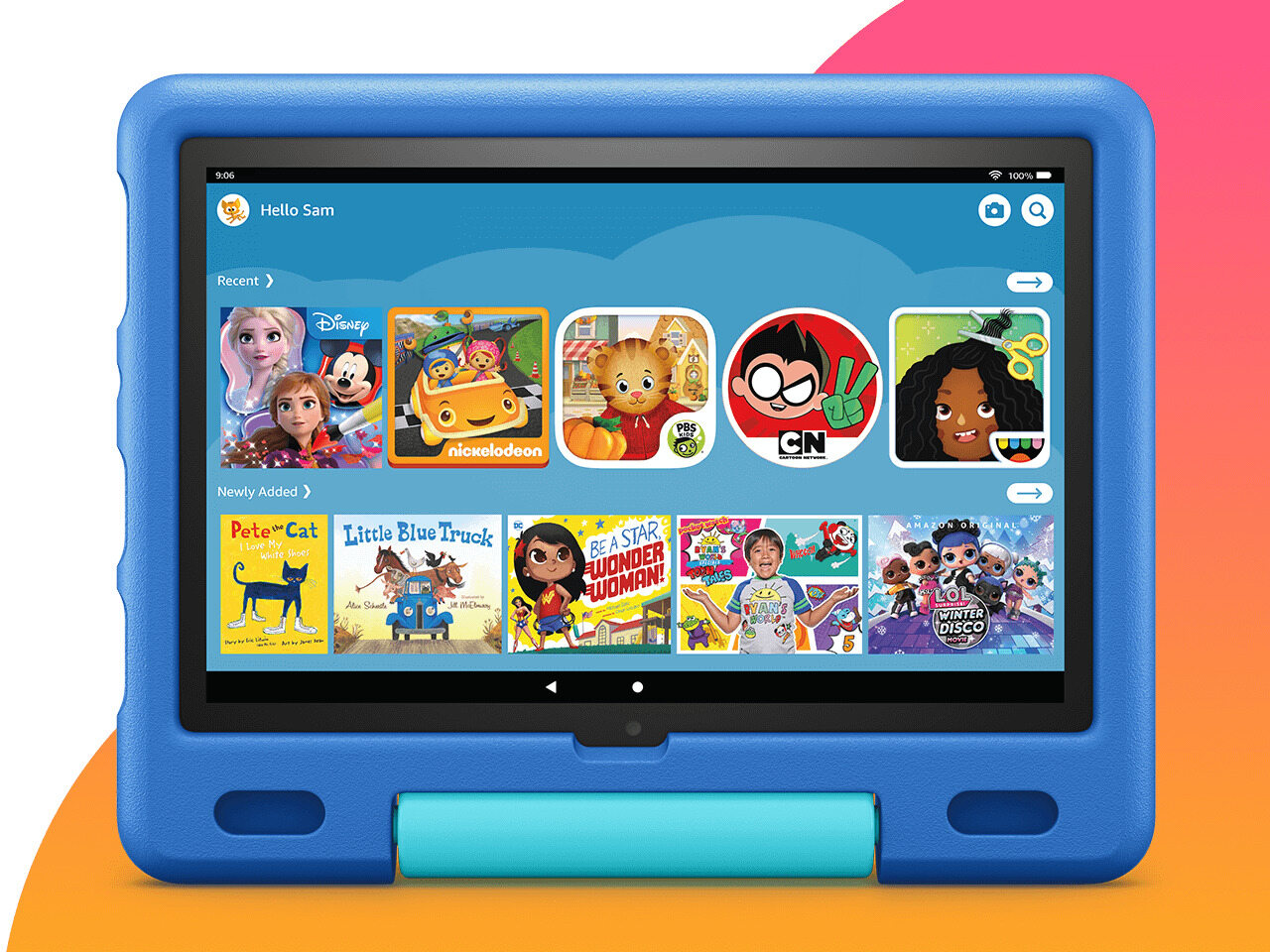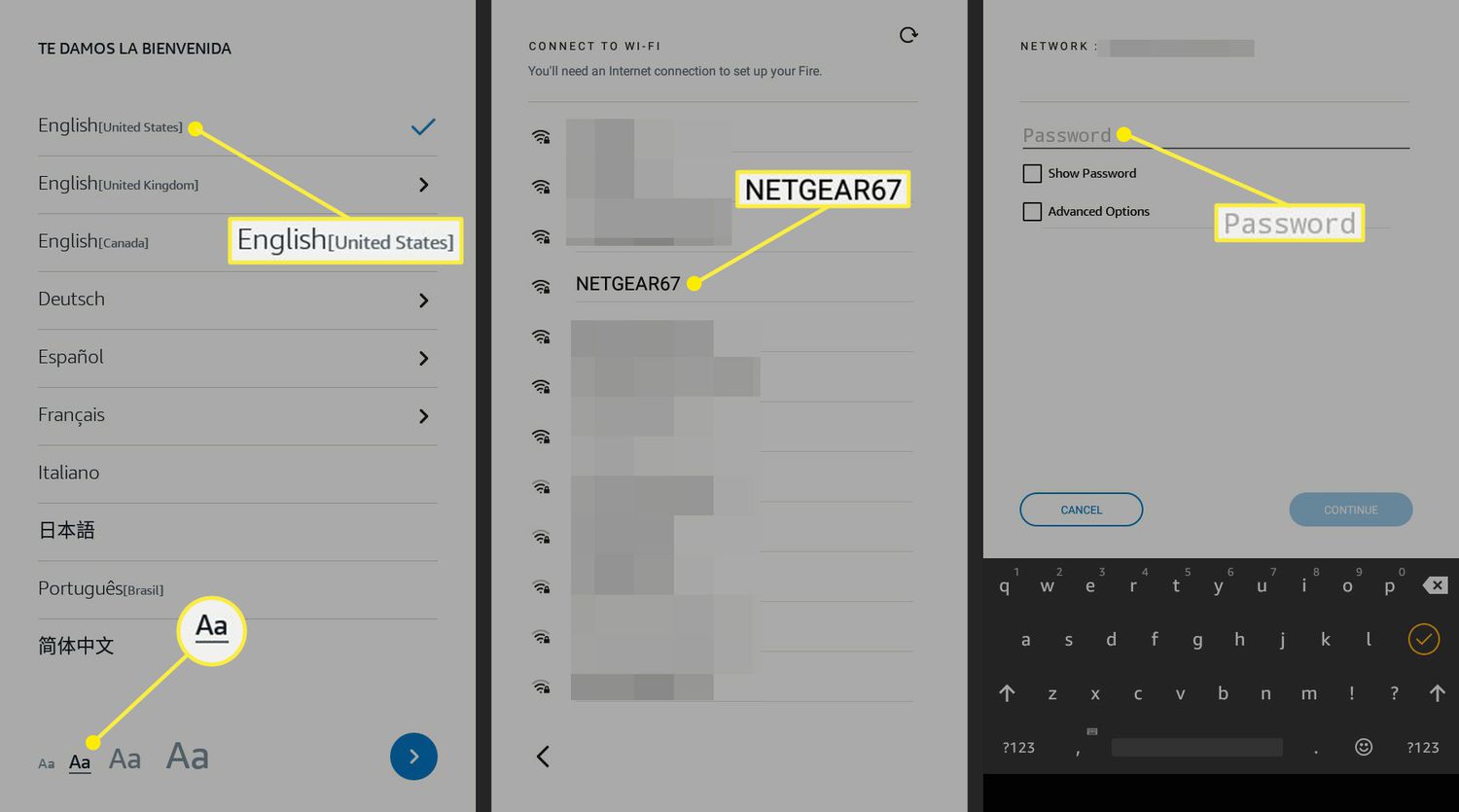Introduction
Welcome to the digital age, where tablets have become an integral part of our daily lives. These portable devices offer endless possibilities for entertainment, education, and communication. However, with great access comes great responsibility, especially when it comes to the younger members of our households.
As parents, it is our duty to protect our children from potentially harmful or inappropriate content that can be easily accessed through tablets. This is where a parental lock comes into play. A parental lock, also known as parental controls or content restrictions, allows you to set limitations on what your child can access on their tablet.
Putting a parental lock on a tablet not only helps in safeguarding your child from exposure to unsuitable content but also allows you to control their screen time, monitor their activities, and ensure they are using the device in a responsible manner.
In this article, we will guide you through the steps to put a parental lock on a tablet, including enabling built-in parental controls, setting up restricted profiles, installing parental control apps, customizing content restrictions, managing app permissions, setting time limits, scheduling screen time, and monitoring usage and activity.
Whether you are a concerned parent or a guardian tasked with managing tablet usage for children, this comprehensive guide will equip you with the knowledge and tools to create a safe and secure digital environment for your young ones.
Why Use a Parental Lock?
As our lives become increasingly digital, it is important to recognize the potential risks and challenges that come with allowing children unrestricted access to technology. Here are some compelling reasons why using a parental lock on a tablet is essential:
- Protecting Children from Inappropriate Content: The internet is a vast and unregulated space, filled with content that may not be suitable for young eyes. A parental lock acts as a filter, blocking access to explicit, violent, or age-inappropriate material.
- Maintaining a Healthy Balance: Excessive screen time can have negative effects on a child’s physical and mental well-being. By setting time limits and scheduling screen time, a parental lock encourages a healthy balance between technology usage and other essential activities such as study, physical exercise, and social interactions.
- Promoting Online Safety: Children are vulnerable to online threats such as cyberbullying, online predators, and scams. Parental control features can help monitor their online activities, block malicious websites, and provide a safer and more secure online experience.
- Encouraging Responsible Device Usage: By setting restrictions on app downloads, restricting in-app purchases, and managing app permissions, a parental lock teaches children about responsible device usage and prevents unintentional access to unauthorized apps or content.
- Facilitating Learning and Development: A tablet with a parental lock can be a valuable educational tool. By customizing content restrictions and allowing access to age-appropriate educational apps, ebooks, and videos, parents can create a conducive environment for their children’s learning and intellectual development.
Overall, a parental lock on a tablet provides peace of mind for parents, ensuring their child’s safety and well-being in the digital world. It empowers parents to guide and monitor their child’s technology usage, fostering a responsible and balanced approach to technology while safeguarding against potential risks.
Steps to Put a Parental Lock on a Tablet
Now that we understand the importance of implementing a parental lock on your child’s tablet, let’s delve into the step-by-step process to ensure a safe and secure digital environment. Follow these steps to set up a parental lock on your tablet:
Step 1: Enable Built-in Parental Controls
Most tablets come with built-in parental control features that allow you to set up restrictions. Start by accessing the settings menu of the tablet and locate the parental control or content restrictions section. Enable the feature and follow the prompts to set a passcode and specify the restrictions.
Step 2: Set Up a Restricted Profile
If your tablet supports multiple user profiles, create a restricted profile specifically for your child. This ensures that their usage is limited to age-appropriate content and prevents unauthorized access to settings and apps.
Step 3: Install a Parental Control App
Consider installing a third-party parental control app for added features and control. These apps often provide more advanced filtering options, website blocking, and remote monitoring capabilities. Search for reputable parental control apps in your device’s app store and follow the installation instructions.
Step 4: Customize Content Restrictions
Take advantage of the parental control settings to customize the content that your child can access. This includes filtering explicit content, setting age restrictions for apps and media, and disabling in-app purchases.
Step 5: Manage App Permissions
Review and manage the permissions granted to each app installed on the tablet. Disable any unnecessary permissions that may compromise your child’s privacy or expose them to inappropriate content.
Step 6: Set Time Limits and Schedule Screen Time
Control your child’s screen time by setting daily limits and creating schedules for specific time slots. This ensures that they have a healthy balance between device usage and other activities.
Step 7: Monitor Usage and Activity
Regularly check the usage and activity reports provided by the parental control app or the built-in parental control settings. This allows you to monitor the websites visited, apps used, and the overall screen time to ensure compliance with the set restrictions.
By following these steps, you will be able to successfully implement a parental lock on your child’s tablet, providing a safe and secure digital experience tailored to their age and needs.
Enable Built-in Parental Controls
One of the first steps in putting a parental lock on a tablet is to enable the built-in parental control features that come with most devices. These features allow you to set restrictions and customize the tablet’s usage for your child.
To enable the built-in parental controls, follow these steps:
Step 1: Access the Settings Menu
Open the settings menu on your tablet. This can usually be done by tapping on the gear icon or by swiping down from the top of the screen and tapping on the settings icon.
Step 2: Locate the Parental Control or Content Restrictions Option
Within the settings menu, look for the option labeled “Parental Controls” or “Content Restrictions”. The location may vary depending on the device and operating system.
Step 3: Enable the Feature
Toggle the switch or checkbox to enable the parental control feature. You may be prompted to set a passcode or PIN to protect the settings from unauthorized changes.
Step 4: Set Restrictions
Once the parental control feature is enabled, you can start customizing the restrictions. The settings may include options to limit access to specific apps, websites, or content categories such as explicit content, violence, or mature themes. Tailor the restrictions based on your child’s age and needs.
Step 5: Set a Passcode
It is important to set a passcode or PIN that only you know. This passcode will be required to make changes to the parental control settings or to bypass the restrictions.
Step 6: Test the Restrictions
After setting up the parental controls, it’s recommended to test them to ensure they are working as intended. Use the tablet in the restricted mode to see if the desired apps and websites are blocked, and if the content restrictions are in place.
By enabling the built-in parental controls, you gain the ability to control and monitor your child’s tablet usage right from the device itself. It’s a simple yet effective way to provide a safer digital environment for your child.
Set Up a Restricted Profile
Setting up a restricted profile on your child’s tablet is an excellent way to ensure that their usage is limited to age-appropriate content and prevent unauthorized access to settings and apps. This feature is particularly useful if your tablet supports multiple user profiles. Follow the steps below to set up a restricted profile:
Step 1: Access the Settings Menu
Open the settings menu on the tablet. This can usually be done by tapping on the gear icon or by swiping down from the top of the screen and tapping on the settings icon.
Step 2: Navigate to the Users or Accounts Section
Within the settings menu, look for the option labeled “Users” or “Accounts”. This section allows you to manage user profiles on the tablet.
Step 3: Add a New User or Profile
Tap on the option to add a new user or profile. Select the option to create a “Restricted Profile” specifically for your child.
Step 4: Customize App and Content Access
Once the restricted profile is created, you can customize the apps and content that your child can access. Enable or disable specific apps and choose which content categories are visible or hidden.
Step 5: Set Restrictions for App Installations
Within the restricted profile settings, you can also set restrictions for app installations. This allows you to control which apps can be downloaded and installed by your child.
Step 6: Switch to the Restricted Profile
After setting up the restricted profile, switch to that profile to ensure that the restrictions are in effect. This allows you to test and verify that your child’s access is limited to the desired apps and content.
By setting up a restricted profile, you can create a safe and controlled environment for your child on their tablet. This ensures that they can only access appropriate content and prevents them from making any unwanted changes to the device settings.
Install a Parental Control App
While the built-in parental control features on a tablet are useful, you can further enhance your control and monitoring capabilities by installing a third-party parental control app. These apps provide additional features and functionalities that allow you to have more in-depth control over your child’s tablet usage. Follow these steps to install a parental control app:
Step 1: Research and Choose a Parental Control App
There are several parental control apps available in the app store of your device. Take some time to research and read reviews to find a reputable and reliable app that suits your needs. Look for features such as website filtering, app blocking, screen time management, and remote monitoring.
Step 2: Download and Install the App
Once you have chosen the parental control app, navigate to the app store on your tablet and search for the app by name. Tap on the “Download” or “Install” button and follow the on-screen instructions to install the app on your device.
Step 3: Create an Account
After the installation is complete, open the app and create an account. This account will serve as your central dashboard for managing and monitoring your child’s device.
Step 4: Set Up Device Management
Depending on the parental control app, you may need to go through the device management setup process. This may involve granting certain permissions to the app on your device to ensure that it can effectively monitor and control the device usage.
Step 5: Customize App Settings
Once the app is set up, you can customize the settings according to your preferences. This includes setting content filters, blocking specific apps or websites, establishing time limits, and creating a weekly schedule for device usage.
Step 6: Test the App’s Functionality
It is crucial to test the parental control app to ensure that it is working correctly. Try accessing blocked websites or apps to verify that the app is properly filtering and blocking content. Validate that the time limits and schedule restrictions are functioning as intended.
By installing a third-party parental control app, you can supplement the built-in controls of your tablet and gain additional functionalities for managing and monitoring your child’s device usage. These apps provide an extra layer of protection and peace of mind for parents in today’s digital world.
Customize Content Restrictions
Customizing content restrictions is an essential step in putting a parental lock on a tablet. By tailoring the content that your child can access, you can ensure that they are only exposed to age-appropriate and safe material. Follow these steps to customize content restrictions on your child’s tablet:
Step 1: Access the Parental Control Settings
Open the parental control settings on the tablet. This can usually be done by going to the settings menu and finding the parental control or content restrictions section.
Step 2: Set Content Filtering
Within the content restrictions settings, you will find options to enable content filtering. These filters block access to explicit, violent, or mature content. Toggle on the appropriate filters based on the age and maturity level of your child.
Step 3: Customize App Permissions
Review and manage the app permissions allowed for your child. Disable any unnecessary app permissions that may compromise their privacy or expose them to inappropriate content. For example, you can restrict access to the camera or microphone for certain apps.
Step 4: Limit In-App Purchases
If your child uses apps that offer in-app purchases, consider limiting or disabling this feature. By doing so, you can prevent accidental purchases or unauthorized spending.
Step 5: Block Specific Websites
To further enhance the content restrictions, you can block specific websites that you do not want your child to visit. Enter the URLs of these websites in the settings, and they will be blocked when accessed from the tablet.
Step 6: Customize Search Engines
If your child uses search engines on their tablet, you can customize the search engine settings to ensure safe search results. Enable the safe search option, which filters out explicit or inappropriate content from search results.
Step 7: Test the Content Restrictions
After customizing the content restrictions, take the time to test them. Attempt to access restricted apps or websites to ensure that the filters are working as intended. Make any necessary adjustments to the settings to ensure they align with your desired level of restriction.
By customizing the content restrictions on your child’s tablet, you can ensure that they are accessing appropriate and safe material while protecting them from potentially harmful or inappropriate content.
Manage App Permissions
Managing app permissions is an important aspect of putting a parental lock on a tablet. By carefully controlling which permissions are granted to each app, you can ensure your child’s privacy and safety while using the device. Follow these steps to effectively manage app permissions:
Step 1: Access the App Settings
Open the settings menu on the tablet and locate the “Apps” or “Applications” option. This will display a list of all the apps installed on the device.
Step 2: Select an App
Choose the app for which you want to manage permissions from the list. Tap on the app to access its settings.
Step 3: View App Permissions
Within the app’s settings, you will find an option called “Permissions” or “App Permissions”. Tap on it to view the permissions that the app requests or has been granted.
Step 4: Review and Adjust Permissions
Carefully review the list of permissions for each app. Some common permissions include access to the camera, microphone, location, contacts, and storage. Disable any permissions that you feel are unnecessary or potentially invasive to your child’s privacy.
Step 5: Manage App Updates
Regularly check for app updates and review the updated permissions that come with them. Some updates may introduce new permissions that were not required before, so it’s important to stay vigilant and ensure that the permissions align with your preferences.
Step 6: Test App Functionality
After managing the app permissions, it’s important to test the functionality of the apps. Ensure that all essential features are still working properly without granting unnecessary permissions.
By managing app permissions on your child’s tablet, you can maintain control over their privacy and security. It allows you to decide which apps have access to sensitive information and ensures that your child’s personal data is not compromised.
Set Time Limits and Schedule Screen Time
Setting time limits and scheduling screen time is an effective way to ensure a balanced and healthy approach to using a tablet. By implementing these restrictions, you can prevent excessive device usage and encourage your child to engage in other activities. Follow these steps to set time limits and schedule screen time on your child’s tablet:
Step 1: Access the Parental Control Settings
Open the parental control settings on the tablet. This can usually be done by going to the settings menu and finding the parental control or screen time management section.
Step 2: Determine Daily Usage Limits
Decide on the maximum amount of time you want your child to spend on their tablet each day. This will depend on factors such as their age, responsibilities, and overall screen time guidelines.
Step 3: Set Time Restrictions
Within the parental control settings, you should find options to set time restrictions. Use these settings to specify the start and end times for when the tablet can be used, as well as any time intervals during which usage is permitted.
Step 4: Schedule Screen Time
Create a schedule for when your child is allowed to use the tablet. This could include dedicated time slots for educational activities, leisure activities, and any other specific purposes. Allocate appropriate time for other essential activities such as homework, chores, mealtime, and physical activity.
Step 5: Device Lockouts
If needed, consider utilizing device lockouts during specific times of the day when you want to completely restrict access to the tablet. This can be particularly helpful during school hours or bedtime.
Step 6: Communicate the Rules
Ensure that your child is aware of the time limits and screen time schedule. Communicate the rules clearly, and discuss the importance of balancing technology usage with other activities.
Step 7: Monitor Compliance
Regularly monitor your child’s compliance with the set time limits and screen time schedule. Use the parental control settings or third-party monitoring apps to review usage reports and activity logs.
By setting time limits and scheduling screen time, you can promote a healthier relationship with technology for your child. These restrictions help to ensure that the tablet is used in moderation and that your child has ample time for other important activities and interests.
Monitor Usage and Activity
Monitoring your child’s tablet usage and activity is crucial to ensure their online safety and responsible device usage. It allows you to stay informed about their digital habits, identify any potential issues, and address them proactively. Follow these steps to effectively monitor your child’s usage and activity:
Step 1: Utilize Parental Control Features
Make use of the built-in parental control features or third-party monitoring apps to track your child’s tablet usage. These tools provide valuable insights into their app usage, browsing history, and screen time.
Step 2: Check Usage Reports
Regularly review the usage reports provided by the parental control settings or monitoring app. This will give you an overview of your child’s device usage, including the amount of time spent on specific apps and websites.
Step 3: Monitor Browsing History
Take a look at your child’s browsing history to see the websites they have visited. This can help you identify any potentially harmful or inappropriate content that they may have encountered.
Step 4: Evaluate App Usage
Examine the apps that your child is using on their tablet. Look for any suspicious or age-inappropriate apps that they may have downloaded without your knowledge. Ensure that the installed apps align with your approved list.
Step 5: Discuss Online Activities
Engage in open and honest conversations with your child about their online activities. Encourage them to share their experiences, ask questions, and seek guidance whenever needed. This will help you understand their digital behavior and provide appropriate guidance.
Step 6: Address Safety Concerns
If you come across any safety concerns or inappropriate content during the monitoring process, have a conversation with your child about it. Explain the risks involved and educate them on online safety practices. Take necessary actions to block access to harmful websites or apps.
Step 7: Adjust Restrictions if Necessary
Based on your observations and discussions with your child, make adjustments to the parental control settings or restrictions if necessary. This ensures that your child’s digital access remains safe and aligned with their age and maturity level.
By actively monitoring your child’s tablet usage and activity, you can stay involved in their digital lives and provide guidance as needed. It allows you to protect them from potential risks and ensure that they are using the device responsibly.
Conclusion
Putting a parental lock on a tablet is an essential step to safeguard your child’s online experience and promote responsible device usage. By enabling built-in parental controls, setting up a restricted profile, installing a parental control app, customizing content restrictions, managing app permissions, setting time limits and scheduling screen time, and monitoring usage and activity, you can create a safe and secure digital environment for your child.
Through the implementation of parental controls, you can protect your child from accessing inappropriate content and ensure that their screen time is balanced with other activities. By customizing content restrictions, you can ensure that they are only exposed to age-appropriate material. Managing app permissions allows you to protect their privacy and limit access to potentially unsafe areas of the device. Setting time limits and scheduling screen time helps maintain a healthy balance between technology usage and other essential aspects of their lives.
Furthermore, monitoring your child’s tablet usage and activity allows you to stay informed and address any issues proactively. By engaging in open conversations and educating them about online safety, you can empower your child to navigate the digital world responsibly.
Remember, each step in putting a parental lock on a tablet is crucial, and can be adjusted to suit your child’s age, maturity level, and specific needs. Regularly reassess and update the settings as your child grows and their requirements change.
By implementing these measures and actively participating in your child’s digital journey, you can ensure their safety, promote healthy device usage habits, and create a positive and secure digital environment for their growth and development.







